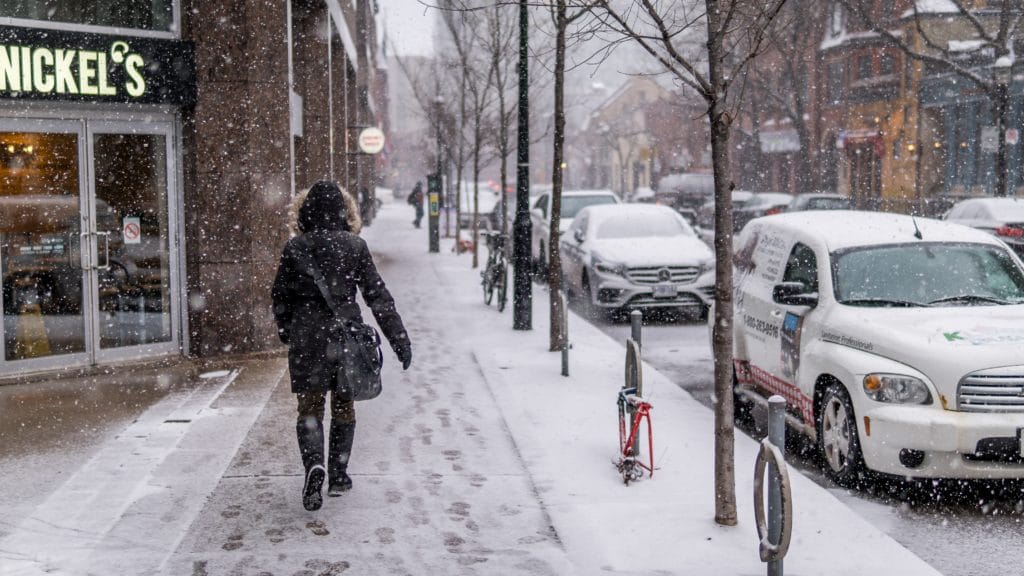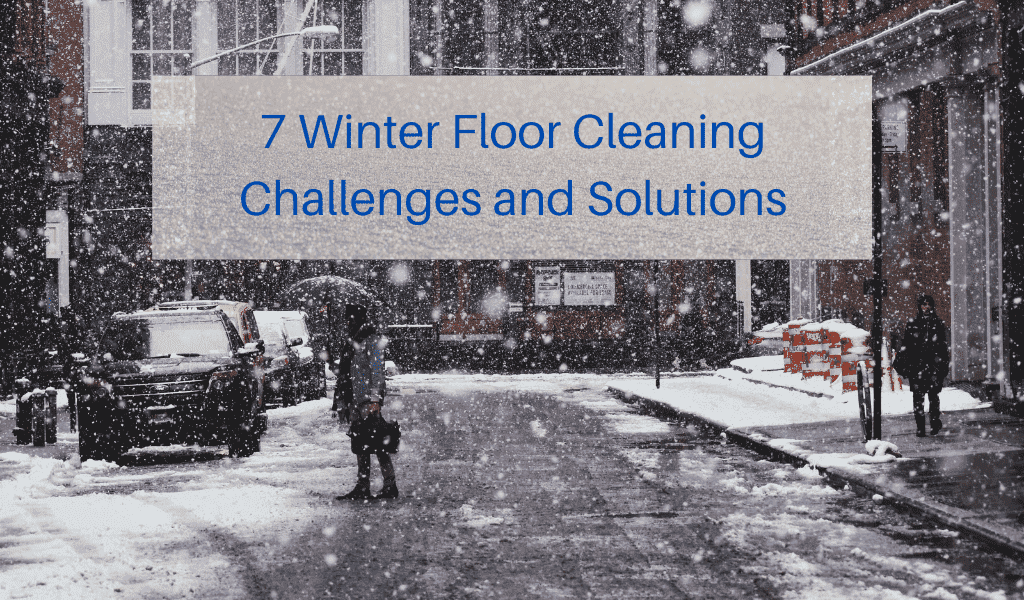Winter weather creates new cleaning challenges for janitorial professionals. Here are some ways to meet those challenges.
There’s floor cleaning, then there’s winter floor cleaning, and they are two very different beasts. The season probably deserves its own series of TikTok floor cleaning challenges where janitorial staff come up with creative ways to deal with the grime, grit, slush, salt, and other detritus left on the floors of office buildings, restaurants, schools, and shops.
One can only imagine the breakdowns on reality television shows if the characters had to clean the floors of a public building after a snowstorm. Just when they’d clean up all the dirt people track in, they’d notice the sopping wet entry mats or the puddles underneath jackets or the drips of melting snow in front of the elevator.
As entertaining as that might be, winter weather still presents some significant cleaning challenges. It’s not just about keeping floors looking pretty, either. Wet floors create a hazard, and all that grit can scratch surfaces. Here’s a look at some of the issues and solutions janitorial teams can expect to encounter in the colder months.
Clean up your cleaning operation with Janitorial Manager! Contact us to learn more about managing work orders, inspections, employee performance, and so much more—all in a single app!

The floor cleaning challenges (and solutions) you will face this winter
1. Wet floors all the dang time. Might as well start with one of the floor cleaning challenges that never seems to go away. Unless you’re standing at every entryway all day long, wet floors are a fact of life in the winter. From fresh snow to melting ice to generally damp conditions, it seems like floors are always wet in the winter.
A few basic steps will help minimize the amount of water that ends up on your floors. Winter floor mats, both outside and inside entryways, can capture snow and ice before it makes it too far into your building. Run a fan at low speed to help dry floors when you and your team can’t be there.
2. Slippery surfaces. With wet floors come slippery surfaces. And with slippery surfaces come slip and fall accidents. One way to limit these accidents is to slow people down. How? Take advantage of your supply of “Wet Floor” signs. While remaining aware of things like wheelchair access, place your signs strategically to help slow people down.
3. Wet entry mats. All those mats you use to collect ice and snow are going to get pretty soggy in short order. You may need to change these out more often on messy days, especially if there are periods of higher foot traffic. You can also provide extra entry mats, so there is greater distribution of outdoor grime and your mats don’t get weighed down so quickly.
4. Salt. When it comes to winter floor cleaning challenges, this one’s a doozy. First, salt is everywhere, from parking lots to driveways to sidewalks and entryways. There’s a good chance you’re spreading salt to melt ice on one side of a doorway and trying to clean it up on the other. The problem? Aside from generally looking messy, salt can damage floors and carpets. What can you do? Use your wet vac frequently and clean floors with a neutralizing solution. Be sure to use clean water when you mop, or you risk spreading salt and other debris even further.
5. Muddy, wet carpets. It’s not just hard flooring that needs extra care in the winter. Carpets can get stained and muddy with all the dirt tracked in. Plus, all that sand and silt contribute to the breakdown of carpet fibers. Your best bet here is to increase the frequency of cleaning, by both vacuuming and deep cleaning.
6. Keeping supplies on hand. It’s hard to know what supplies you might need early on, especially in regions where snowfall and ice aren’t consistent. For example, you don’t want to overstock winter floor care supplies only to end up with just a handful of wintry weather days. Nor do you want to understock and get storm after storm of sleet, wind, snow, and slush.
Your best bet is to look back over the past five years and get an average of how many winter cleaning supplies you need to have on hand, and order those as far in advance as seems reasonable. Then use janitorial software to track how much you’re using, so you know well in advance if you’ll need to order more.
7. Scheduling. This may not be one of the cleaning challenges you expected, but it is, indeed, a challenge. Because continually wet floors need attention, you need to add it to your checklist more often, requiring that you either have more staff available or some way to put more time into taking care of floors. You could hire temporary or contract cleaners. Another option is to take advantage of an app like JM Connect that lets your customers and your on-site janitorial teams communicate with one another. Your team can go about their regular duties, and if the floors in an entry area are getting especially messy or slippery, they can text your team and ask for assistance.
These winter floor cleaning challenges might not be the next big Hulu hit, but they do mean you’ll need to make adjustments in the way you approach your business while the weather is making its presence known. Plan ahead, however, and winter weather won’t stand a chance against your janitorial team.
Increase efficiency, reduce costs, and improve results. With Janitorial Manager, all this and more isn’t just a dream, it’s your new reality. Contact us to learn more and see the solutions available to help you achieve your goals!!

